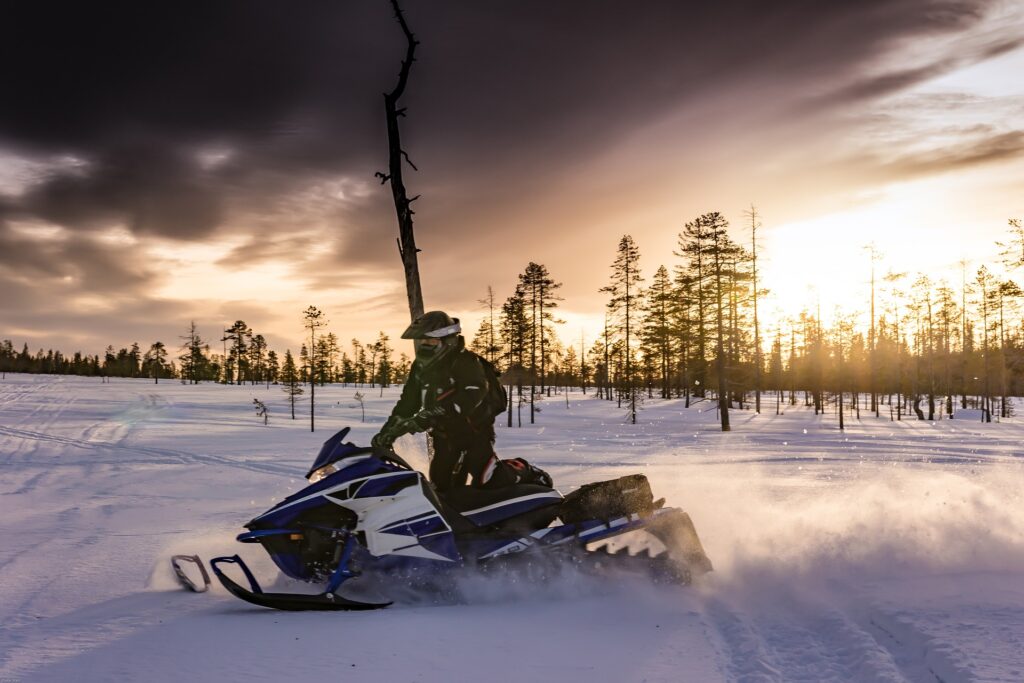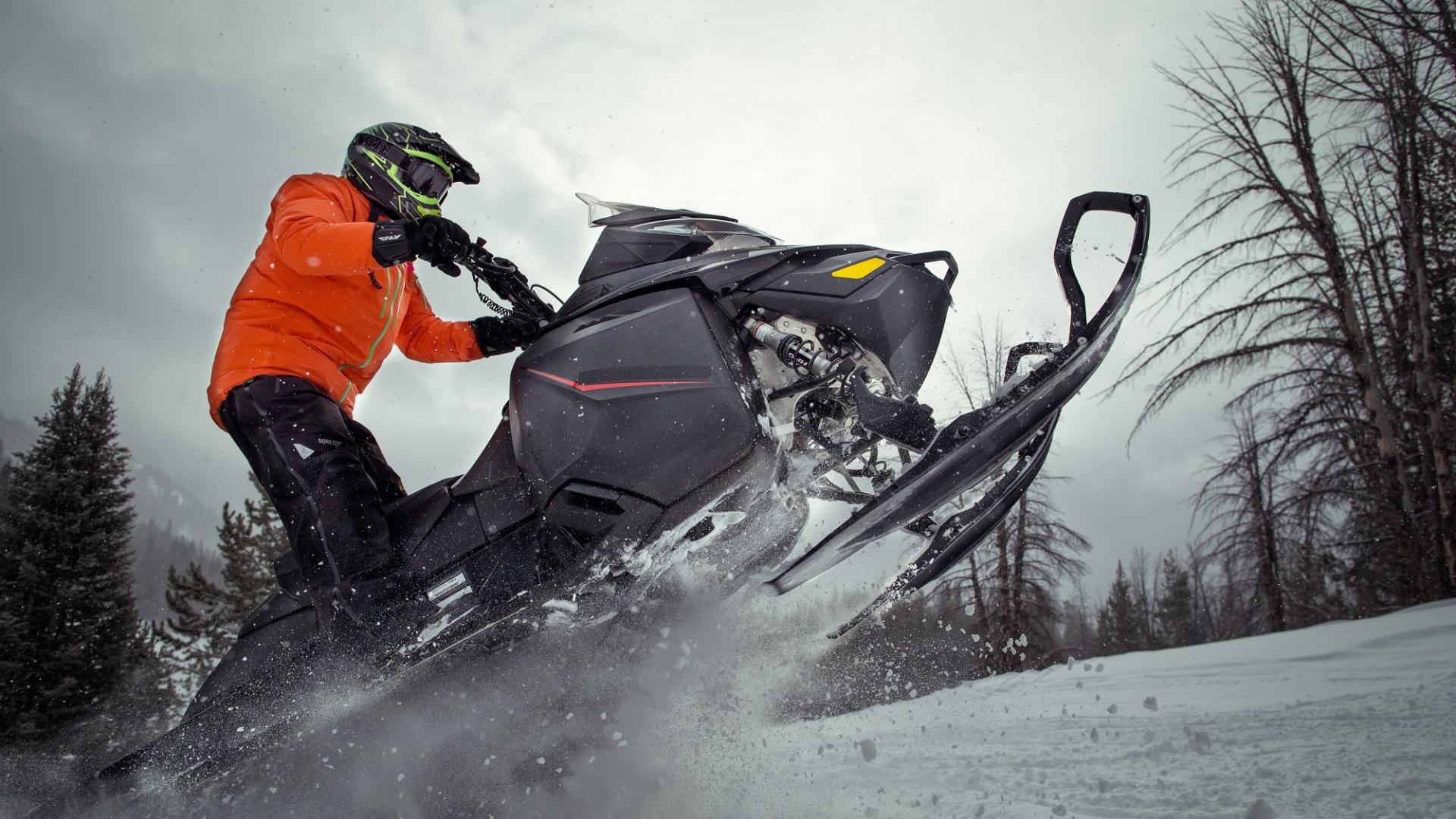
In the world of snowmobiles, engine options have a big impact on the performance and control of the vehicle. The two most common types of engines include two-stroke and 4-stroke engines.
The 2-stroke snowmobiles are known for their high-revving capabilities and raw power, while 4-stroke are more fuel-efficient and reliable but come with the cost of added weight and more moving parts.
But engine choice isn’t always about performance or fuel efficiency. It’s also a matter of preference. This guide will cover the different types of engines used in snowmobiles and what to consider when choosing an engine type to ensure you get one that meets your riding needs and expectations.
The Different Types of Snowmobile Engines
Snowmobiles have a variety of engine sizes and designs, ranging from 120cc up to 1000 cc+. The two main types of snowmobile engines are two-stroke and four-stroke internal combustion engines.
Two-stroke engines use piston-compression technology and are commonly found in smaller snowmobiles manufactured in recent years. These engines operate on fuel with an engine temperature of between 200 and 250 degrees Fahrenheit. They provide good acceleration, but their higher oil and fuel consumption makes them more expensive to operate than a 4-stroke.
On the other hand, a 4-stroke snowmobile engine uses cylinder-ignition technology and features a double- or single-cylinder engine configuration with variable displacement. This engine type is more efficient than two-stroke engines but can be more expensive to purchase and complete repairs if the need ever arises.
A snowmobile is available in various two- and four-stroke engine configurations with HP ranging from 40hp to 200hp. When choosing an engine for your snowmobile, it’s important to consider the size, power output, crankshaft, fuel consumption, engine type (two-stroke or four-stroke), and other factors to find the best engine for your snowmobile needs.
Advantages and Disadvantages of 2-Stroke and 4-Stroke Engines

Two-stroke engines are generally cheaper than four-stroke engines and produce a greater power to weight ratio as they are generally lighter and more nimble than a 4-stroke.
In terms of longevity, two-stroke snowmobile engines historically last 5000 -8000 miles then need some general engine maintenance such as rebuilding the top end.
The number of revolutions per minute (RPM) is also an important factor when choosing between 2-stroke and 4-stroke engine types. 2- stroke engine generates high RPMs, which makes it more efficient in using the power it produces; but 4-stroke engine can reach higher speeds with lower reves per minute creating lesser fuel consumption.
Another advantage of 2-stroke engines is that they are easier to start compared to 4-stroke engine models. In terms of performance, 2-stroke engine generates higher horsepower per cylinder displacement; however, 4 stroke engine generates higher torque per cylinder displacement.
In terms of cost, 2 stroke engine requires less maintenance and has a shorter learning curve; however, 4 stroke engine requires more frequent maintenance and has a longer learning curve to learn if you want to service them yourself.
What to Consider When Choosing an Engine Type
Snowmobile engine types come in 2-stroke and 4-stroke varieties, with each offering different performance and engine size. The 2-stroke engine is the most common, with sizes ranging from 20 hp to 200 hp. 4-stroke engines are also available, with sizes ranging from 40 hp to 200 hp. Snowmobile engine sizes vary widely, from small 120-cc engines in youth snowmobiles to larger 1000-cc engines.
Generally speaking, 2-stroke snowmobile engines are cheaper to manufacture and can be easily adjusted for power output without the need for liquid cooled fuel injection (EFI) intake snowmobiles. However, 4-stroke engines offer more power and efficiency than their 2-stroke counterparts if modified and enhanced properly.
Carburetor vs fuel-injected engine types are another distinction snowmobile engine types can make, with carburetor engines producing more power but consuming more fuel than fuel-injected engines. Performance and displacement distinguish snowmobile engine types as well.
Engine stroke (2-stroke vs 4-stroke) is one of the factors that can impact snowmobile engine type selection. 2 stroke engines tend to have a shorter engine stroke length, allowing them to generate more horsepower per cubic inch of engine capacity than 4 stroke engines.
Another factor is engine aspiration type (naturally aspirated vs turbocharged), which impacts horsepower and efficiency. Lastly, snowmobile engines are often designed for specific performance categories such as high speed or endurance racing or high altitude operation.
Snowmobiles with the best engines include Polaris Cleanfire and Patriot, Ski-Doo Grand Touring, Yamaha, Arctic Cat, BRP, Ski-Doo MXZ, and Rotax ACE. These engines feature high horsepower and lightweight construction for increased snowmobile performance and durability.
PAA (People Also Ask)
What are the different types of snowmobile engines?
Snowmobiles are powered by two types of engines, internal combustion engines. The engines may be 2-stroke or 4-stroke and Carburetor or fuel-injected. 2-stroke engines are lightweight and provide a high-power-to-weight ratio ideal for performance riding in deep snow. 4-stroke engines typically deliver more power than 2-stroke engines but at the expense of greater engine weight and complexity. Fuel-injected 4-stroke engines have become increasingly popular because of their improved fuel efficiency and easier engine maintenance.
The size of the engine can vary from 120cc to 1000cc+. Open-cockpit snowmobiles (2-seat snowmobiles) often use larger 4-stroke engines while ski sleds use smaller 2-stroke engines.
Ski-Doo offers engines that range from 40hp to 180hp depending on the model. There are also specialty performance engine upgrades available for snowmobile enthusiasts who want to maximize engine performance.
What are the advantages and disadvantages of each engine type?
When it comes to engine types, the two main types are two-stroke and four-stroke engines. Each has their own advantages and disadvantages.
Two-stroke engines are generally cheaper than four-stroke engines and lighter in weight. They also have a quicker reaction time making them great for high-speed applications. However, they tend to wear down faster and require more fuel than four-stroke engines.
On the other hand, four-stroke engines are heavier and less reactive but more durable and energy efficient. Replacing or rebuilding an engine is an expensive process regardless of engine type, so investing in a four-stroke engine may be beneficial in the long run as it should last longer than a two-stroke engine.
Are there any safety precautions I should be aware of when operating a snowmobile with a particular engine type?
When operating a snowmobile engine of any type, it’s important to be aware of certain safety precautions.
For two-stroke engines, DO NOT operate with an open and unbaffled exhaust system – this can exceed local noise limits and can result in citations. Additionally, make sure to warm up your engine before riding to avoid irreversible damage. It is also important to take note that many snowmobile clubs do not recommend aftermarket exhausts as they tend to be too noisy.
In addition, it is always a good idea to perform a leak down test before taking your snowmobile out on the snow. This will help you to check for bad crank seals which could cause backfiring, idling problems and engine failure.
Finally, snowmobile engines can be classified according to stroke type, carburetion type, aspiration type, cooling system and performance/displacement. Depending on what engine type you have, be aware of the safety precautions associated with it.
What are some tips for maintaining and servicing my snowmobile engine?
To ensure the longevity of your snowmobile engine, there are a few tips you should follow.
Firstly, perform a top-end engine rebuild every couple of thousand miles. This includes replacing the worn-out pistons, piston rings, cylinders and O-rings and gaskets with new parts. Furthermore, check your crank seals by performing a leak-down test or by spraying ether or WD-40 behind the primary clutch to ensure there are no air leaks.
Secondly, make sure to invest in a quality snowmobile engine, such as a 2015 Ski-doo Summit X 800r e-tec engine motor. This will help reduce wear and tear on engine components over time.
Lastly, regularly check and maintain engine oil levels, spark plugs and fuel filters to keep your engine running smoothly and efficiently. These simple tips will help to keep your snowmobile engine in tip-top shape for its full lifespan!
Conclusion
Now that you know the different engine types, you can make a more informed decision about which engine is best for your snowmobile. 2-stroke engines are more cost-effective and require less maintenance, but 4-stroke engines provide better performance and fuel economy.
Whatever engine type you choose, make sure it’s suited to your skill level and riding conditions to ensure maximum safety and enjoyment. Happy snowmobiling!
